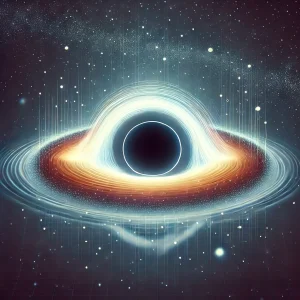Introduction
Black holes have fascinated scientists and the public alike for decades. Their mysterious nature, immense gravitational pull, and ability to warp spacetime make them one of the most intriguing cosmic objects. Traditionally, physicists have used tensor calculus and differential geometry to describe black holes. However, another powerful mathematical framework—Geometric Algebra (GA)—is emerging as a valuable tool for understanding black holes and their properties more intuitively. In this blog, we explore how geometric algebra provides a fresh perspective on black holes.
What is Geometric Algebra?
Geometric Algebra (GA) is a mathematical system that extends vector algebra to higher dimensions and more complex structures. Unlike traditional vector algebra, which relies on separate scalar and vector products, GA unifies these operations into a single framework. It introduces new mathematical objects such as multivectors and rotors, which simplify complex calculations in physics.
GA provides a natural way to describe spacetime events, making it particularly useful for relativity and black hole physics. By using Clifford algebra, GA elegantly represents spacetime transformations, including those influenced by gravity.
Why Use Geometric Algebra for Black Holes?
Physicists traditionally rely on tensor calculus to describe black hole metrics and their interactions with matter and radiation. However, tensor calculus can become cumbersome, requiring extensive index manipulation and complex computations. GA offers several advantages:
- Intuitive Representation: GA naturally describes rotations, boosts, and transformations in spacetime without excessive indexing.
- Compact Equations: Many expressions in general relativity become more compact and manageable using GA.
- Unified Framework: GA seamlessly integrates concepts from linear algebra, complex numbers, and differential geometry, making it a versatile tool for theoretical physics.
Applying Geometric Algebra to Black Holes
One of the most significant applications of GA in black hole physics is its ability to describe spacetime curvature and event horizons more intuitively. Using GA, we can rewrite Einstein’s field equations in a more geometrically meaningful form. Some key applications include:
1. Describing the Schwarzschild and Kerr Metrics
- The Schwarzschild metric describes non-rotating black holes, while the Kerr metric accounts for rotating black holes.
- GA simplifies the derivation of geodesics (the paths followed by objects moving under gravity) by treating spacetime as a geometric entity rather than relying on traditional tensors.
2. Understanding Spacetime Warping
- GA provides a clear visualization of how mass distorts spacetime.
- It allows for a direct interpretation of curvature without needing higher-dimensional embeddings.
3. Hawking Radiation and Quantum Effects
- GA aids in modeling quantum field interactions near black hole horizons.
- The elegant mathematical structure of GA helps in formulating radiation effects in a way that is consistent with both quantum mechanics and relativity.
Future of Geometric Algebra in Black Hole Physics
While GA is not yet a mainstream approach in astrophysics, it holds great potential for simplifying complex theoretical problems. As more researchers explore its applications, GA could lead to new breakthroughs in understanding black holes, quantum gravity, and even potential pathways to a theory of everything.
Conclusion
Geometric Algebra provides an innovative and powerful way to study black holes. By offering a more intuitive and compact representation of spacetime, it enables physicists to re-examine old problems with fresh insights. As the field continues to evolve, GA may play a crucial role in future discoveries about the nature of black holes and the universe itself.
Stay tuned for our next blog, where we’ll explore Hawking Radiation and How Black Holes Slowly Vanish!


